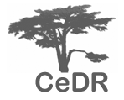


The making of 'Hearing and Touching Leuven': Blindness and multi-sensorial experience in cities
Patrick Devlieger, K.U.Leuven
Abstract
The paper traces the making of 'Leuven Horen en Voelen' (Hearing and Touching Leuven) in which visually impaired and able-bodied people collaborated in writing a multi-sensorial text, selecting and producing tactile plates, and developing an audio-guide of the city of Leuven. Diversity and mutuality are explored in terms of a critique of the visual and the generation of multi-sensorial knowledge.
In this paper, I trace the making of 'Leuven Horen en Voelen'
(a multi-sensorial book of historic sites in the City of Leuven, Belgium,
published in 2007). The book consists of a multi-sensorial text, photographs,
tactile plates, and an audio-guide. Its use is intended for everyone,
including people who are not visually impaired. First, I discuss how the
project emerged from an idea that followed a European initiative, namely
the 2003 European Year of Disabled Persons, with its emphasis on collaboration
between able-bodied and disabled people and on accessibility, as it was
being translated to the local level of a city and its applicability in
the promotion of its historical resources. In particular, I retrace the
organic nature of collaboration and mutuality. Second, I discuss some
misunderstandings and miscalculations by city guides and participants
in the city tour. These 'misunderstandings' could be seen
as the response of a critique on the dominance of visual experience and
attempts to reincorporate the project into existing discourses and practices,
which then again requires new steps in an ongoing dialogue. In this context,
I also discuss the awarding of the Hugo De Keyser price to the project.
Thirdly, I offer some thoughts on the limits and expansions of the book-as-medium
and the dominance of the visual. Finally, I evaluate to what extent visual
impairment serves as an expansion of existing diversity and mutuality
in cities, but also acknowledging existing borders and different worlds
that cannot be easily transgressed.